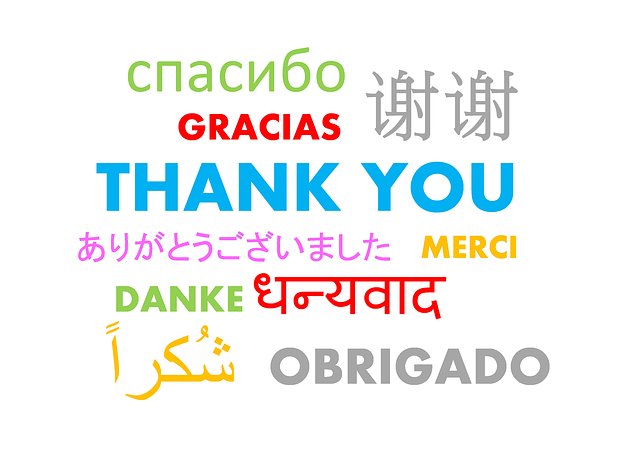 Acquiring a new donor is just the start. Developing long-term donors who contribute year-after-year should be the goal of any fundraiser. Donor acquisition takes a lot of work.
Acquiring a new donor is just the start. Developing long-term donors who contribute year-after-year should be the goal of any fundraiser. Donor acquisition takes a lot of work.
What can you do to improve your donor retention rate? Consider these nine ideas:
- Say thank you. A “thank you” is one of the easiest things you can do, but it’s often forgotten. People remember thank yous, especially if they’re personalized and inventive. Just watch how the ONE organization thanked its volunteers and supporters.
- Celebrate donors as they give. Use social and other platforms to thank them publicly and to welcome them to your organization’s community. Don’t forget to include top donors in annual reports—they look for their names, so mention them.
- Share tangible impact. Show how a donor’s gift impacts your organization, its beneficiaries, and the surrounding community. Says Marc Koenig of Nonprofit Hub, “The more pointed your message is, the more likely you’ll achieve that deep emotional resonance with your most important donors—the ones who are truly committed to your cause, long term.” Such stories satisfy donors and can drive additional gifts and conversation. Use visuals and video, too. Visual media will be remembered longer than an email update or tweet.
 Image credit: Pixabay
Image credit: Pixabay - Develop relationships. Take time to learn about your supporters. What are their other interests? Why do they give to your organization? How can you foster their interests?
 Image credit: Olaf MeyerRelationships last longer than donations and produce a win-win environment. Supporters feel good about your organization and the impact they’re making. You get support and advocacy.
Image credit: Olaf MeyerRelationships last longer than donations and produce a win-win environment. Supporters feel good about your organization and the impact they’re making. You get support and advocacy.
- Segment donors. “Meeting donors where they’re at is a combination of providing the right message in the right place at the right time,” says Jeffrey Haguewood of Hubspot. “However, it’s extremely difficult to do when sending impersonal mass communications. That is why segmenting donors is an important fundraising tactic and best practice.”
Donors support you for varying reasons. One may have a personal connection to your cause. Another may just like what you do in the community. Use those reasons as segments. Then send specific content that will motivate them to act.
- Stay in touch throughout the year. The more you engage with donors, the more they will remember your cause. Use email newsletters to share in-depth updates. Reach out to donors on social every so often. Send personalized notes when it’s a donor’s birthday, anniversary, or other momentous occasion.
- Invite top donors to join an exclusive community. Or, in Lori Halley’s (Wild Apricot) words, make them feel “special […] respect, loyalty, commitment, and trust are the cornerstones of most relationships.”
 Image credit: dan hodgett
Image credit: dan hodgett
Give donors opportunities to provide input into new programs or to participate on a donor board. Offer discounted pricing to galas and other invitation-only events. Share stories privately before going public with them. - Ask for ongoing support. It never hurts to ask, so just do it! Donors supported you once; they’re likely to do it again. Remember to be specific. Explaining why you need a recurring gift and what impact it will have is crucial to raising support.
- Analyze your retention rate and increase the lifetime value of your donors. Every year, evaluate whether retention has gone up or down. Decipher what caused the increase or decrease. Use the data to improve your communications and programs. Smart Annual Giving offers a step-by-step guide for figuring out an annual retention rate.
For additional resources, visit Give Local America. We created a toolkit and free training to help nonprofits better fundraise.
About Lori Finch
Lori Finch is the Vice President of Community Giving, Kimbia and the General Manager of Give Local America. With an extensive background working with nonprofit organizations, Lori is uniquely suited in her role of managing relationships with Kimbia’s community foundation clients and partners, helping to ensure their success. Prior to Kimbia, Lori spent six years at The San Diego Foundation where she served as Director of Nonprofit Programs, developing education resources and tools for more than 250 local nonprofits. She holds an MBA from The University of Chicago, Booth School of Business, and a B.S.B.A in Finance from Georgetown University.
1. Share tangible impact. Show how a donor’s gift impacts your organization, its beneficiaries, and the surrounding community. Says Marc Koenig of Nonprofit Hub (http://www.nonprofithub.org/fundraising/5-simple-rules-to-increase-donor-loyalty/), “The more pointed your message is, the more likely you’ll achieve that deep emotional resonance with your most important donors—the ones who are truly committed to your cause, long term.” Such stories satisfy donors and can drive additional gifts and conversation. Use visuals and video, too. Visual media will be remembered longer than an email update or tweet.
2. Develop relationships. Take time to learn about your supporters. What are their other interests? Why do they give to your organization? How can you foster their interests?


COMMENTS